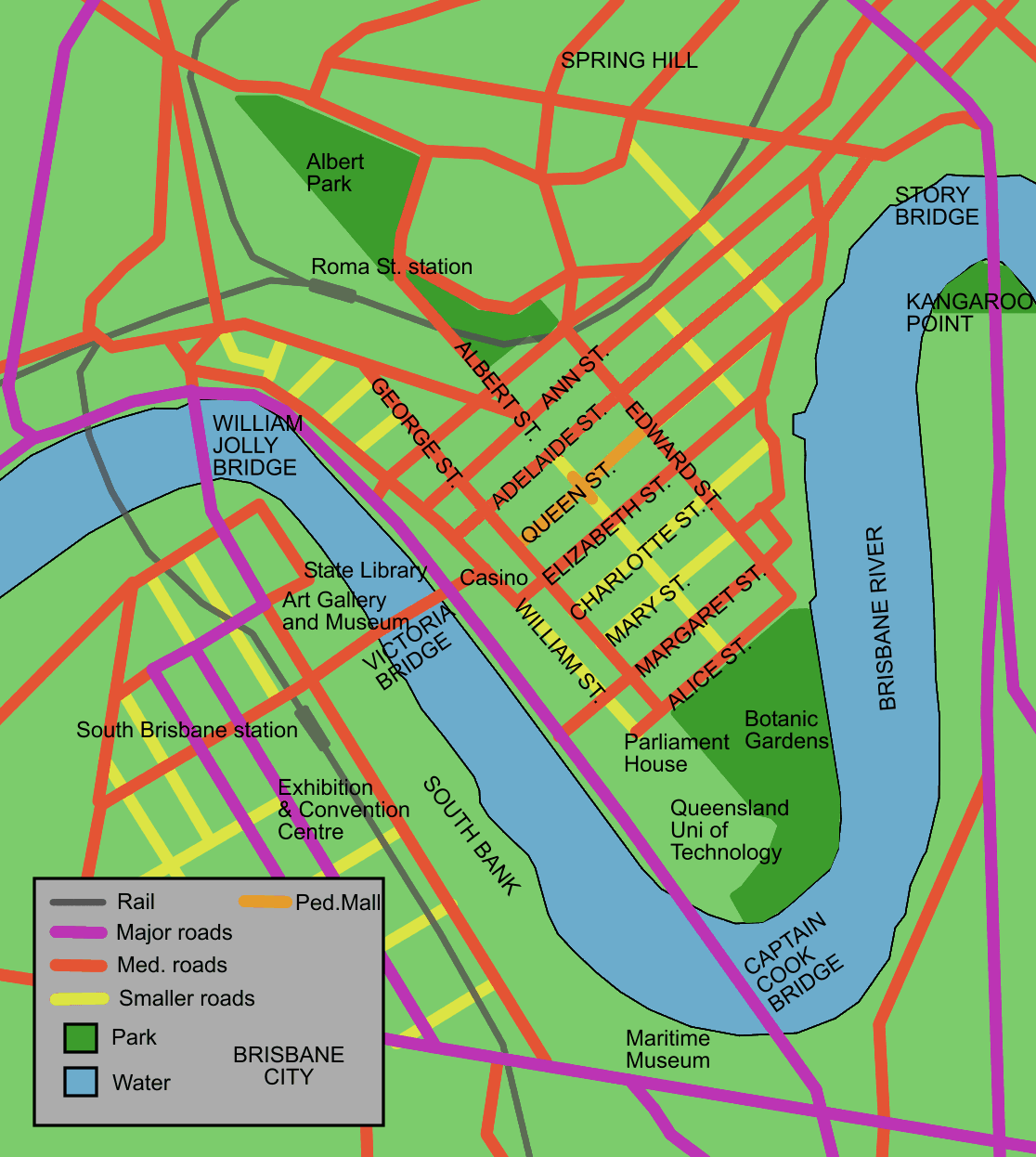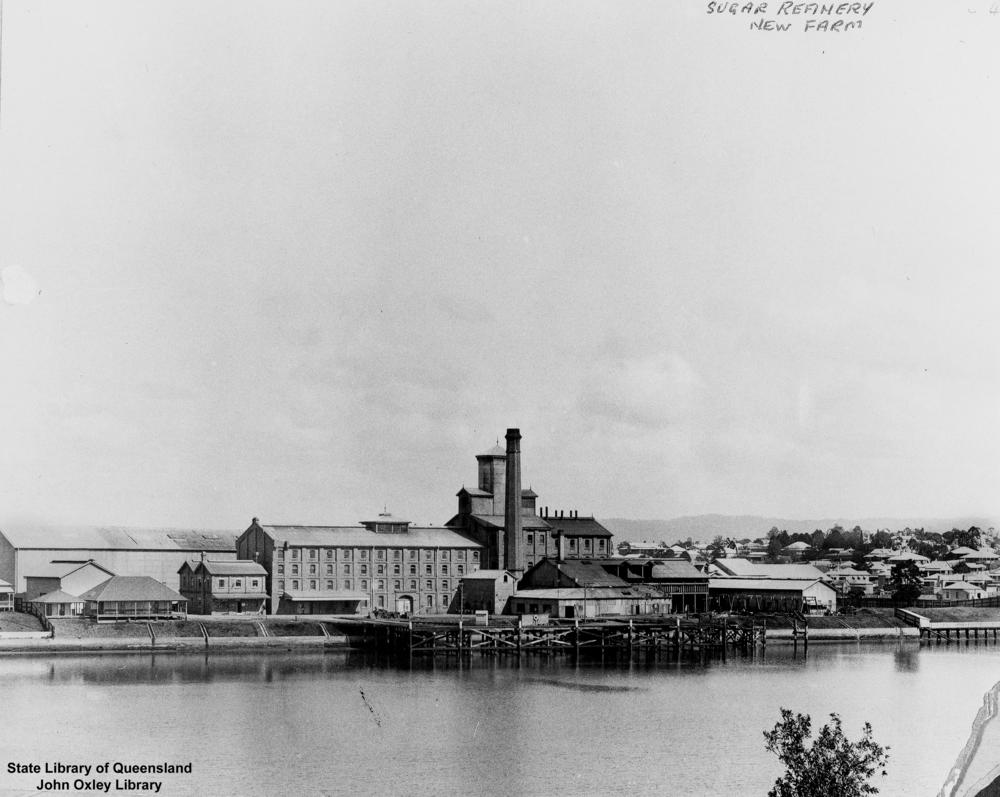|
New Farm Park
New Farm Park is a heritage-listed riverfront public park at 137 Sydney Street, New Farm, City of Brisbane, Queensland, Australia. It was designed by Albert Herbert Foster and built from 1914 to 1950 by Gladwin Legge & Co. It was added to the Queensland Heritage Register on 7 February 2005. The park covers and is at the southeastern end of the New Farm peninsula on a bend in the Brisbane River. The Powerhouse arts centre is at the eastern end of the park. The park includes the New Farm Park ferry wharf and links to the Brisbane Riverwalk from Newstead to Toowong. It is one of Brisbane's most popular parklands and tourist attractions. History New Farm Park, created in 1914, currently covers of land, and is bounded by Brunswick Street and Sydney Street, New Farm. It adjoins the Brisbane Powerhouse arts precinct and the Brisbane River. Prior to European settlement, the New Farm area was covered with bush and dotted with shallow lagoons. It supported a variety of wildlife ... [...More Info...] [...Related Items...] OR: [Wikipedia] [Google] [Baidu] |
Brisbane Central Business District
Brisbane City is the central suburb and central business district of Brisbane, the state capital of Queensland, Australia. It is colloquially referred to as the "Brisbane CBD" or "the city". It is located on a point on the northern bank of the Brisbane River, historically known as ''Meanjin'', ''Mianjin'' or ''Meeanjin'' in the local Aboriginal Australian dialect. The triangular shaped area is bounded by the median of the Brisbane River to the east, south and west. The point, known at its tip as Gardens Point, slopes upward to the north-west where the city is bounded by parkland and the inner city suburb of Spring Hill to the north. The CBD is bounded to the north-east by the suburb of Fortitude Valley. To the west the CBD is bounded by Petrie Terrace, which in 2010 was reinstated as a suburb (after being made a locality of Brisbane City in the 1970s). In the the suburb of Brisbane City had a population of 9,460 people. Geography The Brisbane central business district is ... [...More Info...] [...Related Items...] OR: [Wikipedia] [Google] [Baidu] |
Queensland Governor
The governor of Queensland is the representative in the state of Queensland of the monarch of Australia. In an analogous way to the governor-general of Australia at the national level, the governor performs constitutional and ceremonial functions at the state level. In particular the governor has the power to appoint and dismiss the premier of Queensland and all other ministers in the cabinet, and issue writs for the election of the state parliament. The current governor of Queensland, former Chief Health Officer of Queensland Jeannette Young, was sworn in on 1 November 2021. The chief justice of the Supreme Court of Queensland, currently Helen Bowskill, acts in the position of governor in the governor’s absence. As from June 2014, Queen Elizabeth II, upon the recommendation of then-Premier Campbell Newman, accorded all current, future and living former governors the title 'The Honourable' in perpetuity. Official residence The governor of Queensland has resided at Governme ... [...More Info...] [...Related Items...] OR: [Wikipedia] [Google] [Baidu] |
CSR Refinery, New Farm
CSR Refinery is a heritage-listed former refinery at Lamington Street, New Farm, City of Brisbane, Queensland, Australia. It was built from 1892 to 1893. It is also known as Colonial Sugar Refining Company Refinery of New Farm. It was added to the Queensland Heritage Register on 21 October 1992. History The CSR Refinery at New Farm was erected by the Colonial Sugar Refinery Company in 1892-1893. Founded in Sydney in 1855, the Colonial Sugar Refining Company (now CSR Limited) has come to dominate the Australian sugar industry, its very name synonymous with sugar. The 19th century was a time of enormous change in the history of sugar which was to fuel the growth of companies such as CSR and the development of sugar as a new industry in places with suitable growing conditions such as Queensland. The technological advances in the refining process at this time transformed sugar from a luxury item to a staple food and saw a corresponding dramatic increase in the consumption of sug ... [...More Info...] [...Related Items...] OR: [Wikipedia] [Google] [Baidu] |
John Oxley Library
The State Library of Queensland is the main reference and research library provided to the people of the State of Queensland, Australia, by the state government. Its legislative basis is provided by the Queensland Libraries Act 1988. It contains a significant portion of Queensland's documentary heritage, major reference and research collections, and is an advocate of and partner with public libraries across Queensland. The library is at Kurilpa Point, within the Queensland Cultural Centre on the Brisbane River at South Bank. History The Brisbane Public Library was established by the government of the Colony of Queensland in 1896, and was renamed the Public Library of Queensland in 1898. The library was opened to the public in 1902. In 1934, the Oxley Memorial Library (now the John Oxley Library), named for the explorer John Oxley, opened as a centre for research and study relating specifically to Queensland. The Libraries Act of 1943 established the Library Board of Queenslan ... [...More Info...] [...Related Items...] OR: [Wikipedia] [Google] [Baidu] |
Henry Moore (gardener)
Henry Spencer Moore (30 July 1898 – 31 August 1986) was an English artist. He is best known for his semi- abstract monumental bronze sculptures which are located around the world as public works of art. As well as sculpture, Moore produced many drawings, including a series depicting Londoners sheltering from the Blitz during the Second World War, along with other graphic works on paper. His forms are usually abstractions of the human figure, typically depicting mother-and-child or reclining figures. Moore's works are usually suggestive of the female body, apart from a phase in the 1950s when he sculpted family groups. His forms are generally pierced or contain hollow spaces. Many interpreters liken the undulating form of his reclining figures to the landscape and hills of his Yorkshire birthplace. Moore became well known through his carved marble and larger-scale abstract cast bronze sculptures, and was instrumental in introducing a particular form of modernism to the Unite ... [...More Info...] [...Related Items...] OR: [Wikipedia] [Google] [Baidu] |




